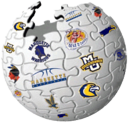We previously covered the breakdown of the Marquette offense and what made it tick. However, it's not as though the offense was a static aspect of the season... clearly the team played worse at some spots and better in others.
How did the offensive performance change throughout the season?

The graph above is a moving 5-game average of our offensive efficiency against Top 100 opponents. The season average for efficiency shows up in the dashed red line, so one can see the points where the team was below season average and above season average. To dig in deeper, we're going to look at four separate points.
- Villanova #1, which represents mostly the non-conference schedule but is a low point offensively
- at Providence, which was the high water mark for the season offensively
- at Georgetown. This game was down slightly, but still above average for offensive efficiency. The key here is that it was the last full game with Dominic James
- Missouri, which was obviously the final game of the season

It's kind of an eye chart, but here is the key to the colors. Red is an area where that factor is worse than season average, and green is an area better than season average.
#1 - Pace. As we saw with its modest impact on efficiency, pace didn’t have a significant impact on offensive performance. There was no strong trend over time relating to offensive performance, and we can see pace being both above average and below average for strong and weak offensive periods.
#2 - eFG%. Again, as covered last week, eFG% has the biggest impact on offensive performance, and that shows up further here. The team's eFG% was below average on the worst mark of the season, well above average at both points, and then well below average in the final game of the season. Please note that after James went out, our eFG% went into a nose dive for the rest of the season. (of course, our opponents had something to do with that too).
 #3 - Turnover Rate. Apart from eFG%, this was the biggest change from the Villanova game through the Providence game. Protecting the ball was a significant strength for Marquette, but it wasn't early in the season. There was a slight worsening effect in TO% after James got injured, but not enough to make a difference.
#3 - Turnover Rate. Apart from eFG%, this was the biggest change from the Villanova game through the Providence game. Protecting the ball was a significant strength for Marquette, but it wasn't early in the season. There was a slight worsening effect in TO% after James got injured, but not enough to make a difference.
 #4 - Offensive Rebounding Percentage. Interestingly enough, this was worse than average in both of the periods (@PC, @GU) that were positive efficiencies. There is almost an inverse relationship between offensive efficiency and offensive rebounding percentage, but that’s misleading. A better interpretation is that MU was better at offensive rebounding once James went out and Jimmy Butler got more playing time. This factor helped offset slightly the poor effective field goal percentage.
#4 - Offensive Rebounding Percentage. Interestingly enough, this was worse than average in both of the periods (@PC, @GU) that were positive efficiencies. There is almost an inverse relationship between offensive efficiency and offensive rebounding percentage, but that’s misleading. A better interpretation is that MU was better at offensive rebounding once James went out and Jimmy Butler got more playing time. This factor helped offset slightly the poor effective field goal percentage.

#5 - Free Throw Rate. As mentioned before, despite the large number of free throw attempts we made, there was only a limited impact on our offensive efficiency. Similar to offensive rebounding, this was worse in the good efficiency periods and better in the poor offensive efficiency periods.
 Summary
Summary
At the end of the season, Marquette was better than average on turnovers, offensive rebounding, and free throw rate. However, none of those areas were enough to offset the poor effective field goal percentage. This information also adds more backing that although Marquette was best in class for protecting the ball and getting to the free throw line, only the turnover rate had a significant impact on their results.
It was the eFG%, which was frequently mediocre, that had the largest impact on offensive performance. That's probably my biggest takeaway from this analysis... there's little that can be done with the other factors to overcome poor effective field goal percentage.

1 comment:
Post a Comment